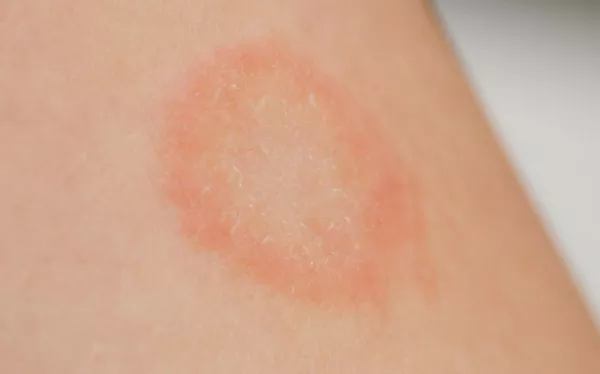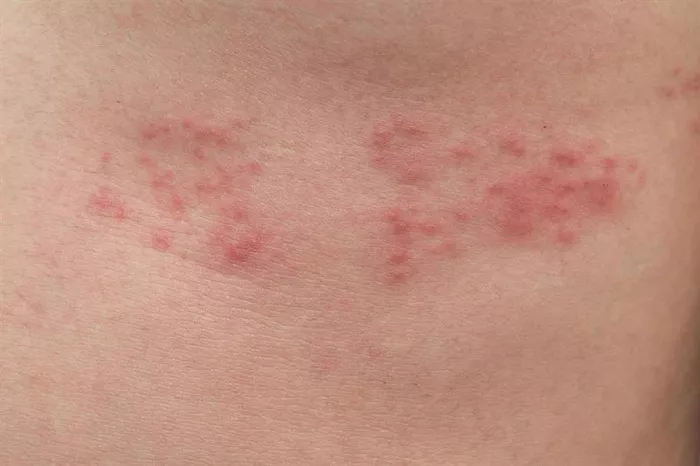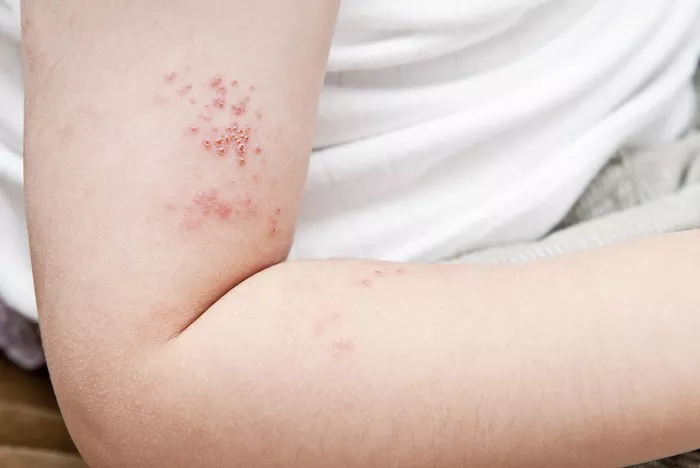Ringworm is a common fungal infection that can affect both humans and animals. Despite its name, it is not caused by a worm, but by a group of fungi called dermatophytes. These fungi thrive on the skin, hair, and nails, leading to red, itchy, and sometimes scaly patches. Understanding how ringworm transfers can help you prevent the spread of this infection and protect both yourself and others.
In this article, we will explain the different ways ringworm is transferred, how it spreads from person to person, and how you can reduce your risk of catching or transmitting the infection.
What is Ringworm?
Ringworm, also known as tinea, is a fungal infection that occurs when dermatophytes infect the outer layers of the skin. The name “ringworm” comes from the round, ring-like appearance of the rash it causes. It can appear on various parts of the body, including the scalp (tinea capitis), body (tinea corporis), feet (tinea pedis, commonly known as athlete’s foot), and nails (tinea unguium). The infection is not dangerous but can be uncomfortable and unsightly.
Direct Skin-to-Skin Contact
The most common way ringworm transfers is through direct contact with infected skin. If someone with ringworm touches or comes into contact with your skin, the fungal spores can easily be transferred to your body. This is why the infection is often spread in places like schools, gyms, and homes where people are in close contact.
When an infected person scratches or touches a ringworm rash, the fungi release spores into the environment. These microscopic spores can live on the skin and spread to others who touch the affected area. If the rash is on an exposed part of the body, such as the arms or face, it becomes easier for others to come into contact with the fungus.
Indirect Contact with Contaminated Objects
Another way ringworm spreads is through indirect contact with contaminated objects. The fungi that cause ringworm can survive on surfaces for a period of time, which makes it easy to catch the infection by touching things that have been in contact with an infected person’s skin. Common objects that can carry the spores include:
- Towels
- Bed linens
- Clothing
- Hairbrushes or combs
- Personal care items like razors
If you touch any of these contaminated objects and then touch your own skin, you risk transferring the fungal spores to your body. This is why it is essential not to share personal items with others, especially in places like locker rooms or public bathrooms.
Animal-to-Human Transfer
Animals, especially pets like cats, dogs, and livestock, can also carry and transfer ringworm to humans. The fungi that cause ringworm are zoonotic, meaning they can be passed from animals to humans. If an animal has ringworm, they may carry the spores on their fur, paws, or skin. Humans can catch the infection by petting or handling an infected animal or by coming into contact with areas where the animal has been.
Pets, especially cats, can spread ringworm without showing any symptoms. Sometimes, the infection is not visible on an animal, making it harder to detect. If you have a pet and notice signs of ringworm, such as hair loss, scaly patches, or redness on their skin, it is important to seek veterinary care immediately.
Fungal Spores in the Environment
In addition to transferring ringworm through direct or indirect contact, the fungal spores can also be present in the environment, particularly in areas that are warm and damp. Dermatophytes thrive in places like:
- Locker rooms
- Swimming pools
- Public showers
- Wet areas like bathrooms and gyms
Walking barefoot in these areas increases the likelihood of coming into contact with fungal spores, leading to conditions like athlete’s foot. The fungi can also spread from the floor to your shoes or socks, making it easy to transfer the spores from one place to another.
The Role of Poor Hygiene and Skin Scratching
Poor hygiene can also contribute to the spread of ringworm. If you don’t wash your skin regularly or fail to shower after physical activity, your skin may become a breeding ground for the fungi. When you have ringworm, scratching the infected area can release spores into the air or onto your hands, increasing the risk of spreading the infection to other parts of your body or to others.
Scratching can also damage the skin, allowing the fungus to penetrate deeper, making it easier for the infection to spread. This is why it is crucial to avoid scratching and to treat ringworm as soon as possible to prevent further contamination.
How Long Do Ringworm Spores Survive Outside the Body?
Ringworm spores can survive outside the human body for extended periods, making it easy for the infection to spread through contact with contaminated objects and surfaces. In certain conditions, these spores can live for weeks or even months. The longevity of the spores depends on the environment. Warm, humid areas are ideal for the fungi to thrive, which is why you are more likely to catch ringworm in places like gyms, swimming pools, or even damp areas of your home.
To reduce the risk of spreading ringworm, it is important to disinfect frequently-touched surfaces such as:
- Door handles
- Light switches
- Phones
- Bathroom and kitchen counters
Regularly washing your hands and maintaining good hygiene can help prevent the transfer of ringworm and other fungal infections.
Is Ringworm Contagious Before Symptoms Appear?
Yes, ringworm can be contagious before the symptoms become visible. This is one of the reasons why it is so easy for the infection to spread. Even if a person doesn’t show signs of the infection, they can still carry and transmit the spores. This can occur during the early stages of the infection when the rash or lesions are not yet noticeable.
It is important to note that ringworm can still spread even if the infected person isn’t actively scratching the area. The spores are present on the skin, and any direct or indirect contact can transfer them to others.
How Long Does It Take for Ringworm to Spread?
Ringworm can begin to spread quickly, especially if it is not treated promptly. Once the spores are transferred to your skin, they can start to grow and multiply within a few days. The infection may appear as a red, itchy, and scaly patch on the skin. Over time, the infection can spread to larger areas of the body if it is not treated.
If you have ringworm, it is essential to start treatment immediately to reduce the chance of it spreading to other parts of your body or to other people. Antifungal creams, powders, or oral medications can help clear the infection. Treatment usually takes a few weeks, and it is important to complete the full course of treatment to prevent reinfection.
How Can You Prevent the Spread of Ringworm?
There are several steps you can take to prevent the spread of ringworm, both to yourself and to others. These include:
Practice good hygiene: Wash your hands regularly, especially after touching an infected area or contaminated objects. Shower after physical activities that cause you to sweat.
Avoid sharing personal items: Don’t share towels, combs, or razors with others, and avoid using public hairbrushes or other personal grooming items.
Wear protective clothing: In public places like gyms or locker rooms, wear sandals or flip-flops to avoid direct contact with contaminated surfaces.
Treat infections promptly: If you notice any symptoms of ringworm, such as red, scaly, itchy patches, seek treatment right away. This will reduce the chance of spreading the infection.
Clean and disinfect regularly: Wash clothing, bed linens, and towels frequently. Disinfect surfaces in your home and other areas where the fungus may be present.
Keep your environment dry: Dermatophytes thrive in warm, moist environments, so try to keep areas like bathrooms, locker rooms, and other high-humidity places as dry as possible.
Protect pets: If you have pets, ensure that they are regularly checked for ringworm and treated if necessary. If you suspect your pet has ringworm, take them to a veterinarian as soon as possible.
Conclusion
Ringworm is a highly contagious fungal infection that can spread easily through direct contact, contaminated objects, and even from animals to humans. Understanding how ringworm transfers can help you take the necessary steps to prevent its spread. By practicing good hygiene, avoiding contaminated items, and seeking prompt treatment, you can protect yourself and those around you from this common but treatable infection.
Related topics:



























